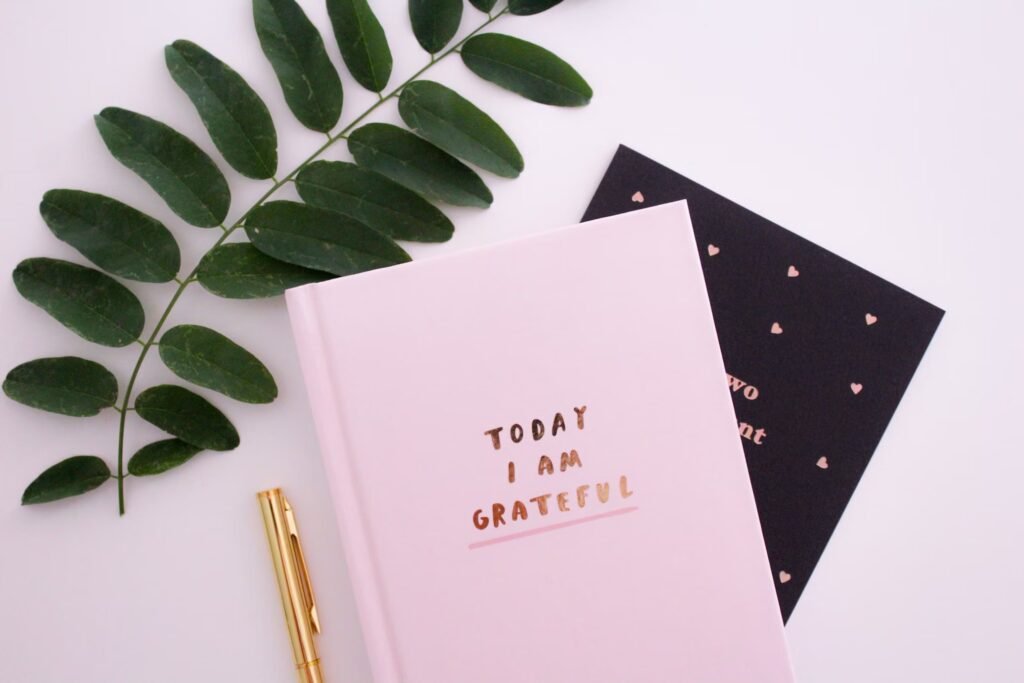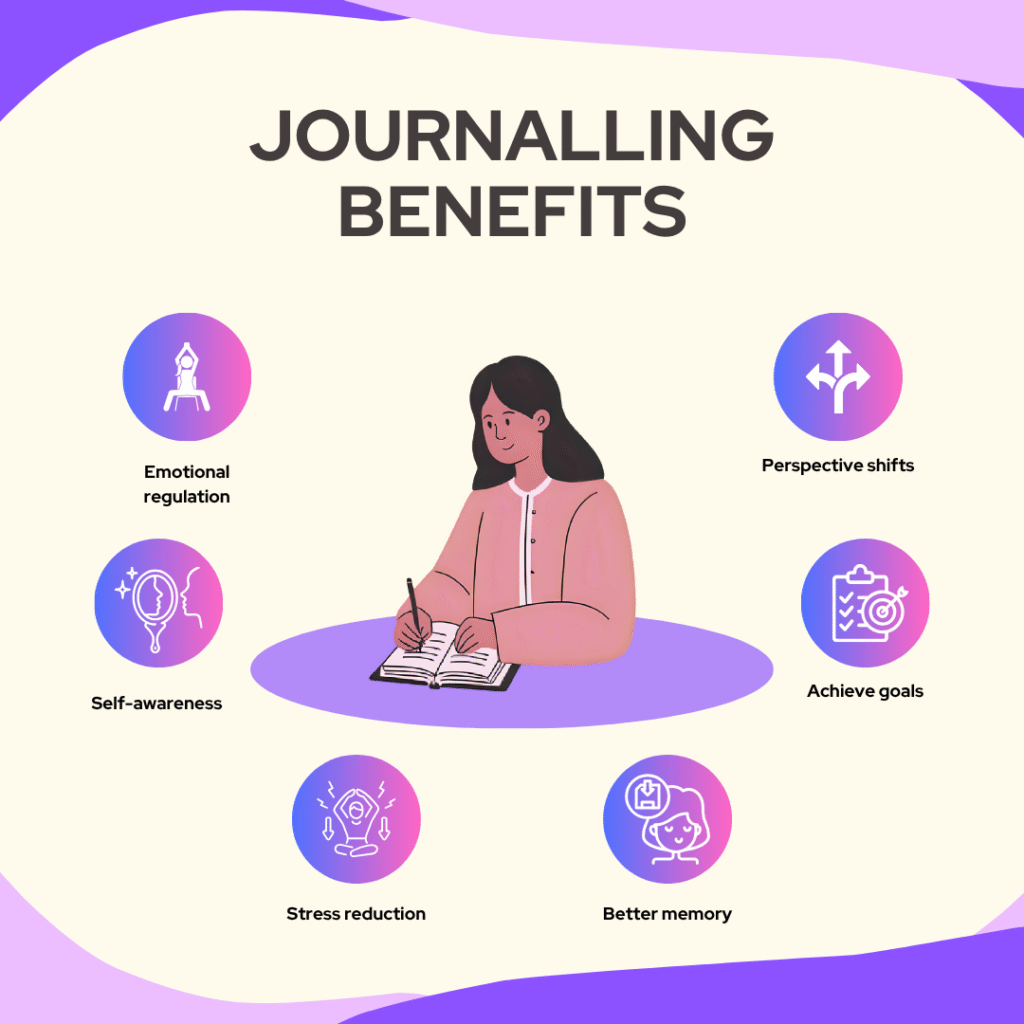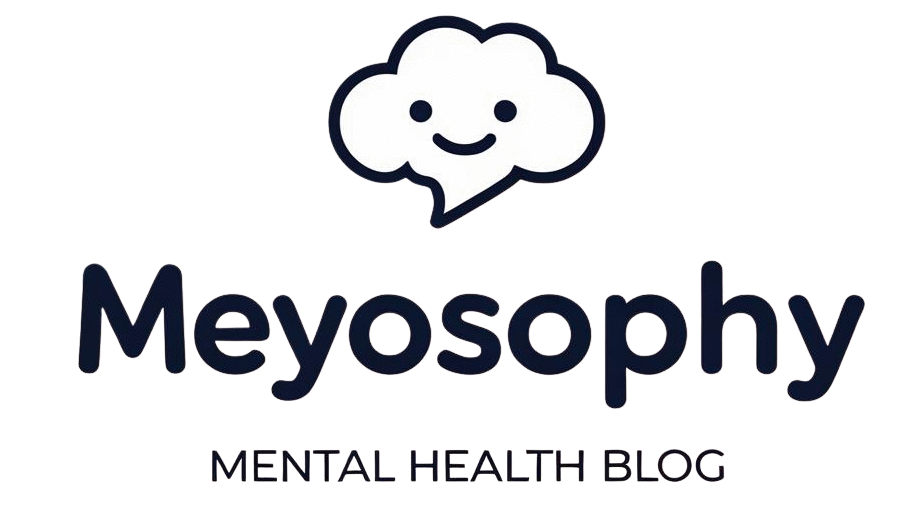We hear it all the time: “You should try journaling!” But what does that actually mean? Is it just keeping a diary like we did as kids? Maybe just writing your feelings? Is there a “right” way to do it?
Let me start by saying: there’s no single definition of journaling and that’s the beauty of it.
At its core, journaling is a way of tuning in to yourself. It’s the simple (but powerful) act of writing your thoughts, feelings, and reflections on paper (or in a digital notebook, if that’s more your style). For some, it’s daily check-ins. For others, it’s occasional brain dumps during chaotic weeks. Either way, journaling gives your thoughts a place to land.

Journaling for Mental Health
When you feel anxious, low, stuck in your head, or emotionally tangled, journaling helps you get it out. Not in a polished, Instagram-worthy kind of way. Just… out.
Research shows that expressive writing (like journaling) can reduce symptoms of anxiety, depression, and PTSD¹. It activates areas of the brain responsible for emotional regulation² and helps you make sense of your experiences instead of just swirling in them.
It’s not magic. But it can feel like a mental reset button.
You might write:
- What you’re feeling, and why
- A worry that keeps looping in your mind
- Something you wish you could say to someone
- A decision you’re wrestling with
- Or nothing in particular, just whatever’s sitting in your head
Journaling makes the invisible visible. It helps you name things. And once something has a name, you can actually do something with it.
But It’s Not Just for “Negative” Emotions
Sometimes we only turn to journaling when we feel bad, but it’s also a tool for clarity, growth, and self-awareness.
When life feels like it’s going okay (or even good), journaling can help you:
- Reflect on what’s working
- Remember small moments you want to hold onto
- Process change or transitions
- Make sense of your goals or values
- Simply slow down for a moment and be with yourself
Over time, your journal becomes a record of your inner world and reading back can be surprisingly affirming.
You might realize:
“Wow, I’ve grown so much since I wrote this.”
Or:
“That thing I was afraid of actually turned out okay.”
It becomes your personal proof of progress, even when life feels like a mess.
There’s No “Right” Way to Journal
Seriously. You don’t need fancy notebooks. You don’t have to write every day. You’re not being graded.
There are a lot of styles out there and you’re allowed to mix and match. A few common ones:
- Freewriting: Just write whatever comes to mind without censoring or editing. Let your thoughts wander. No structure needed.
- Prompt-based journaling: You answer a question (like “What do I need right now?” or “What am I avoiding?”).
- Gratitude journaling: Listing a few things you’re grateful for each day. Great for rewiring your brain toward the positive³.
- Mood tracking: Noting how you feel and why, day by day.
- Letters you’ll never send: Writing to someone (or yourself) to release thoughts you’re holding in.
You can even just make bullet points or doodle. It all counts.
Try These Gentle Prompts
If you don’t know what to write, that’s totally normal. Prompts can help get things flowing. Here are a few to try:
- What’s been taking up space in my mind lately?
- What would I say to myself if I were my best friend?
- What do I need more of in my life right now?
- What am I afraid might happen and what else could be true?
- What’s one thing I’m proud of that I rarely give myself credit for?
There’s no pressure to go deep every time. Some days you’ll write a few lines. Other days, you might fill five pages.
Journaling Isn’t a Fix, It’s a Tool
Journaling isn’t meant to solve everything. It’s not a replacement for therapy or real-life conversations. But it is a gentle, consistent way of staying connected to yourself.
Some days, it’ll feel like a breakthrough. Other days, you’ll write “I don’t know what to say” five times in a row. Both are okay.
What matters is the practice of pausing, checking in, and listening, even when it’s messy.

Tips to Start Journaling (Without Pressure)
- Start small. Even 5 minutes counts.
- Pick a time that works for you, morning reflection or bedtime brain-dump.
- Keep your journal somewhere easy to reach.
- Don’t reread right away. Let the process be more important than the result.
- Be curious, not critical. You’re not trying to impress anyone (not even future you).
- If writing’s hard, speak it into a voice memo. Or use a journaling app. Or draw it out.
Journaling is yours. Make it work for you.
It’s one of the simplest, kindest ways to say: “I’m here. I’m listening.”
🔗 Sources
- Baikie, K.A., & Wilhelm, K. (2005). Emotional and physical health benefits of expressive writing. Advances in Psychiatric Treatment.
- Lieberman, M. D. (2013). Why expressive writing improves mental health: Neural evidence. Psychology Today.
- Emmons, R.A., & McCullough, M.E. (2003). Counting blessings versus burdens: An experimental investigation of gratitude and subjective well-being in daily life. Journal of Personality and Social Psychology.
Disclaimer: I’m not a mental health professional, everything here is shared from research and personal experience. If you’re feeling overwhelmed or need support, please consider talking to a qualified professional. You’re not alone. If you’re in the U.S., you can call or text 988 anytime. For help in other countries, visit https://findahelpline.com.

